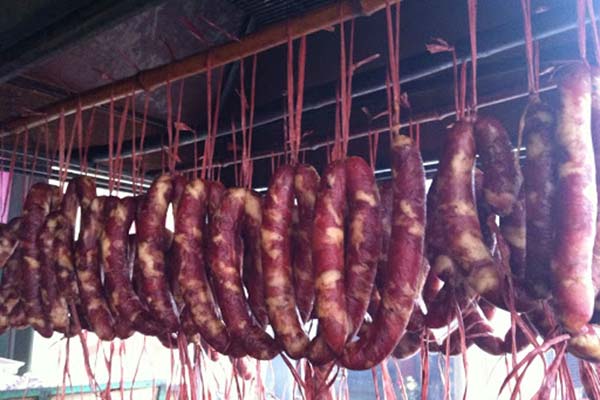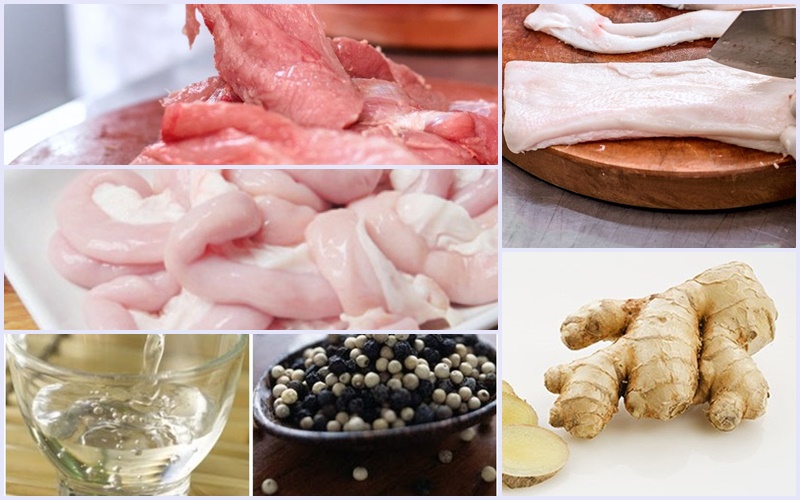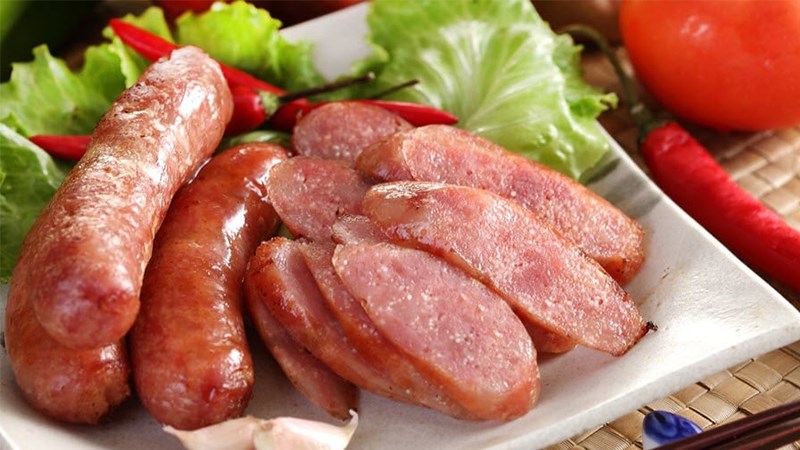Lạp Xưởng Hun Khói
Origin and Cultural Background
Smoked sausage, or “lạp xưởng hun khói”, is a beloved traditional dish made by ethnic minorities in the mountainous regions of Lai Châu Province, particularly among the Thái and Mông communities. This dish is deeply tied to the winter season and Lunar New Year (Tết) celebrations, when families gather to prepare preserved foods for months ahead.
Unlike southern-style sweet sausages, Lai Châu’s smoked sausages are savory, smoky, and spiced with forest herbs, reflecting the rustic character of the highlands.
Ingredients and Preparation
The key to a good smoked sausage lies in the quality of its ingredients and the traditional processing method:
Ingredients:
-
Fresh free-range pork (especially shoulder or belly)
-
Pork fat (in balanced proportion for juiciness)
-
Garlic, ginger
-
Mắc khén (wild peppercorns of the Northwest)
-
Hạt dổi (a rare forest seed with unique aroma)
-
Salt, rice wine
Preparation Steps:
-
Marinating: The pork is minced or chopped, then mixed with all the spices and seasonings. It is left to marinate for several hours to absorb the flavors.
-
Stuffing: The seasoned meat is then stuffed into natural pork casings (cleaned intestines), tied into links.
-
Smoking: The sausages are hung above the kitchen wood-fire stove and smoked for several days. The smoke not only preserves the meat but also gives it a distinct woody aroma.
-
Drying: After smoking, sausages are left to air-dry, becoming firmer but still juicy inside.
Flavor and Texture
Smoked sausages from Lai Châu are:
-
Savory, with a hint of spice and earthy smokiness
-
Slightly chewy but juicy inside
-
Deeply aromatic from forest spices
They can be grilled, steamed, pan-fried, or sliced thin and added to stir-fried dishes. The most popular way is grilling over charcoal, then enjoying with sticky rice (xôi nếp nương) or dipping in chẳm chéo (traditional Thái dipping sauce).
Where to Find It
-
At home: Many households in Lai Châu make their own lạp xưởng, especially during Tết.
-
Markets: Available in traditional markets like Nậm Nhùn, Than Uyên, or Tam Đường.
-
Souvenir: Often vacuum-packed and sold to tourists as a regional specialty.
Cultural Significance
Lạp xưởng is not just food — it represents preparation for winter, family bonding, and hospitality. In ethnic Thái and Mông families, offering smoked sausage to guests is a sign of warmth and respect.
It's also a food that brings generations together, as family members gather around the fire to stuff and hang sausages — a scene of tradition, love, and mountain life.
Why You Should Try It
If you want to taste the soul of the northern highlands, lạp xưởng hun khói is a must. It's bold, flavorful, and deeply connected to the lifestyle and culture of Vietnam’s remote mountain communities. One bite offers not only flavor but also a journey through smoke, spice, and the spirit of the forest.




